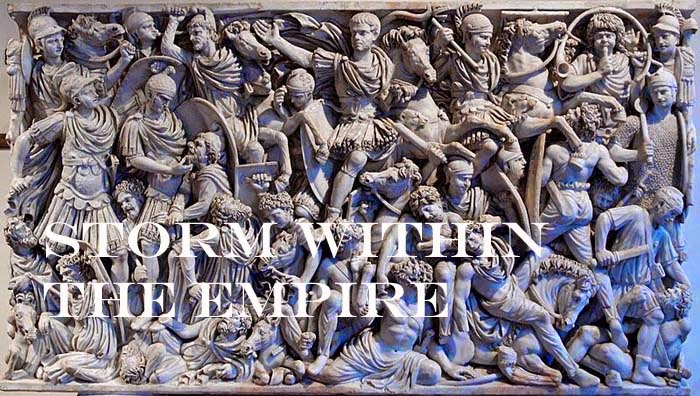The envisioned campaign will
focus principally on the journey of two major groups; that of the coalition of
Vandals, Alans, Burgundians and Suevi of 406 AD and second, the Gothic
departure from Italy to southern Gaul following the death of Alaric.
Determining the size of each group has proved a challenge and I am following
the nominal guideline set by some historians to determine general numbers by factoring
the number of warriors by five to arrive at a total number representing each nation.
This is not infallible as the number of troops involved in recorded engagements
has proven difficult as they are scarce.
Herwig Wolfram, in his History of the Goths does devote a
section of his book to the “harjis” or tribal army as comprising of 3,000
warriors with generals commanding 1,000 warriors. It would not seem too
unreasonable to imagine the other nations might also use a similar organization.
Therefore, using the guideline we reach a tribal strength of 15,000; this is considered
low by some historians while others place the number as high as 100,000. The
latter figure just might reflect the sum total for all the nations involved in
the crossing of 406 AD as reviewing the crossing, the Vandals were formed from
the Siling and Asding groups, the Alans were lead by two kings and together
with the Burgundians and Suevi could reach the higher figure.
One must imagine the
difficulty of crossing the Rhine in the dead of winter, eventually forming a
large number of columns spread over a wide front seeking forage and plunder. As
the majority moved on foot, the Alans mounted found themselves well in advance
of the columns and no doubt triggered the alarm of a new incursion. The magnitude
of the incursion may not have been fully comprehended as the mobile army and
many limitanei were on campaign in Italy or along the Danube (405 and 406) as
local Gallic militias were incapable of dealing with the threat.
News of the invasion reached
Britain and as the political situation was in a state of flux Constantine
(Roman general) seized upon the opportunity to declare himself emperor.
Securing his position in Britain, Constantine III took the Britannic mobile
army across the channel to counter the invasion and further extend his control
over the west.
Designing the campaign
Using the migration as theme
for a campaign offered a number of aspects not usually touched upon by pure
military operations. The primary goal here is the preservation of the tribe as
it journeys through unknown regions in search of a “home”. This is easily
handled by the current rule system taking into account the slow pace set by the
masses of migrants.
Secondly, despite the fact
that all the nations named crossed the Rhine during the same period does not necessarily
mean they cooperated with each other while in Roman Gaul. The Asding and Siling
Vandals were susceptible to inter-tribal feuds and did not co-operate with the
Alans or Suevi, the Suevi were a collection of Germanic tribes, possibly Quadi,
Marcomanni and some Alamanni, and would take a direction in Gaul seeking territory away
from the masses, as did the Burgundi and finally the Alans dispersed themselves into
smaller groups to settle in differing areas of Gaul and Spain. This part will
require some additional rules to cover inter-tribal conflicts, the willingness to
co-operate with the other tribes and Roman
resistance.
The campaign will cover nearly
a three year period to start during the winter of 406 AD and end during the
early fall season of 409 AD. The scenario will allow players to set their own
course and tempo but all should realise actual historical events will take place, such as the arrival of Constantine III, the
participation of the foederati and the Saxon raids.
Play testing the additional
rules will be carried out over the next few weeks with reports and photos appearing here.

No comments:
Post a Comment